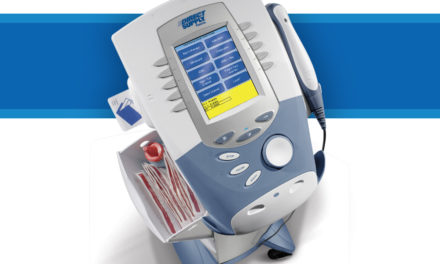In today’s senior living communities, every meal is more than nourishment, it’s a meaningful part of clinical care, social engagement, and overall satisfaction. However, foodservice teams face increasing pressures from staffing shortages, volatile ingredient costs, evolving dietary needs, and rising expectations.
Artificial intelligence (AI) and automation tools are reshaping food and beverage services, and senior care is no exception. These technologies unlock opportunities to increase efficiency, personalize dining, and elevate the experience for both residents and staff.
At Direct Supply®, we believe the future of senior care operations is already being shaped by AI. Providers that embrace this shift today will be best positioned for success tomorrow.
Proof senior care foodservice is ready for AI innovation
Dining operations in senior care are among the most complex in any care environment. From clinical compliance to menu planning to procurement, foodservice teams navigate numerous challenges requiring smarter, faster solutions.
AI is already addressing key issues such as:
- Manual and reactive menu planning
- Unpredictable inventory management
- Staffing gaps and inconsistent quality
To scale effectively and deliver personalized experiences, AI-driven tools are becoming essential in senior care foodservice.
In addition to software intelligence, foodservice robotics can play a critical role in managing labor-intensive routines like food running, bussing, and tray passing. These tasks, often repetitive and injury-prone, are ideal candidates for automation. When paired with AI-driven planning, robotic solutions multiply efficiencies and relieve pressure on frontline teams.
Communities are already seeing measurable impact. One dining manager at the Front Porch Center for Innovation and Wellbeing reported, “Our overtime went from $13,800 down to $7,145 from June to July. We are seeing a declining trend in our OT [because of the robots].”
Where AI is making an impact, and what’s next
While still in the early stages, AI applications in foodservice are rapidly gaining traction. Here’s where momentum is building and how these solutions might evolve:
1. Adaptive menu creation
Today: AI-powered platforms use real-time product pricing and availability to help communities create cost-effective, resident-centered menus.
Tomorrow: Menus may adapt daily based on real-time feedback, seasonal ingredients, and biometric data from wearable devices.
2. Predictive inventory and procurement
Today: Tools like Direct Supply® DSSI™ deliver real-time ingredient pricing and availability, helping you source from preferred vendors at the best value. When an item is unavailable, DSSI recommends contract-compliant, cost-effective alternatives, ensuring uninterrupted service and optimized spend.
Tomorrow: AI could merge supplier inventory, pricing trends, and community events to predict needs proactively.
3. Intelligent staffing and workflow support
Today: AI helps align staff schedules with peak demand.
Tomorrow: AI might recommend task shifts, identify training needs, and anticipate prep time spikes to improve team performance.
4. Robotics in meal delivery and bussing
Today: Autonomous food delivery and robotic bussing, like Servi Plus, can help reduce physical strain and speed up service in dining areas.
Tomorrow: Foodservice robotics may coordinate directly with AI systems to anticipate traffic flow, prioritize delivery routes, and adjust timing based on dining room capacity.
Physical automation: Foodservice robotics in senior care
As AI enhances planning and forecasting, foodservice robotics tackles operational challenges at the point of service. These technologies take on repetitive, labor-intensive tasks that often strain dining teams, especially during peak hours. By integrating automation into dining workflows, care environments can boost efficiency, ease physical demands, and deliver more consistent mealtime experiences.
Key applications include:
- Autonomous meal delivery: Transports plated meals from kitchen to dining areas, freeing staff to focus on higher-value care.
- Automated bussing systems: Streamline cleanup and dish room workflows, reducing post-meal bottlenecks.
- Robotic tray service: Delivers drinks, snacks, and hors d’oeuvres on preprogrammed routes to enhance social dining occasions.
Real results from AI-driven procurement
AI is already delivering measurable results, and the proof is right here. Communities using Direct Supply Procurement Services see significant savings and efficiency improvements through the application of the OGM.ai™ order guide management tool. OGM.ai streamlines procurement by centralizing order guides, helping teams identify preferred products down to the invoice level, ensure consistency across facilities, and even resolve discontinued items automatically. When supply runs short, OGM.ai recommends equal or lower-cost alternatives, reducing canceled orders by nearly 50% and saving staff valuable time.
$630k+ in savings achieved by a 187-location senior living provider who seamlessly implemented over 5k AI-recommended products.
$136k+ in annual savings achieved by a 77-location assisted living organization that adopted 71% of AI-recommended products.
$554k+ in rebates earned by a senior living community that reduced skilled food costs by $0.69 per PPD.
48% fewer stock-outs and 360x faster updates achieved with OGM® 3 compared to manual order guide methods.
What’s ahead: expanding benefits of AI in senior dining
As AI moves beyond procurement, its potential to transform operations continues to grow:
For residents:
- Tailored menus meeting individual needs
- Nutritional precision supporting chronic conditions
- Higher satisfaction through tailored, well-executed dining experiences
“65.4% of residents believed that the robots improved their overall dining experience”
– Front Porch Center for Innovation and Wellbeing
For staff:
- Automated compliance monitoring
- Easier inventory management and ordering
- More time for creativity and resident engagement
- Robotics that automate repetitive, physical tasks like food running and bussing.
- Fewer physical injuries and more time to focus on personalized service
For providers:
- Accurate forecasting and tighter budget control
- Actionable insights into menu performance
- Streamlined reporting for compliance and quality initiatives
How to prepare for AI in foodservice
1. Assess data readiness
Centralize dietary, inventory, supplier, and satisfaction data. Digitize menus and track feedback for future AI integration.
3. Run targeted pilots
Test AI tools in one community or one menu cycle. Set clear goals, such as reducing prep time or increasing satisfaction scores.
2. Focus on high-impact areas
Tackle high-cost challenges like food waste and pricing volatility first. AI tools can help reduce wasteful spend by identifying off-contract ingredient purchases and recommending compliant alternatives aligned with your order guide.
4. Empower your team
Involve your culinary team early and provide hands-on support. Show how AI frees up time and improves outcomes without replacing jobs.
Looking ahead
AI is no longer optional in senior care foodservice, it’s becoming central to strategic planning. At the intersection of AI, automation, and clinical nutrition, new technologies help providers work smarter, improve satisfaction, and achieve better outcomes.
At Direct Supply, we’re developing the next generation of AI tools to automate foodservice workflows, enhance resident satisfaction, and strengthen operational outcomes.
Whether it’s AI for procurement and menu planning, or robotics for food delivery, now is the time to begin integrating AI and automation into your foodservice operations.




